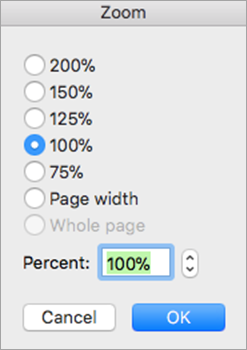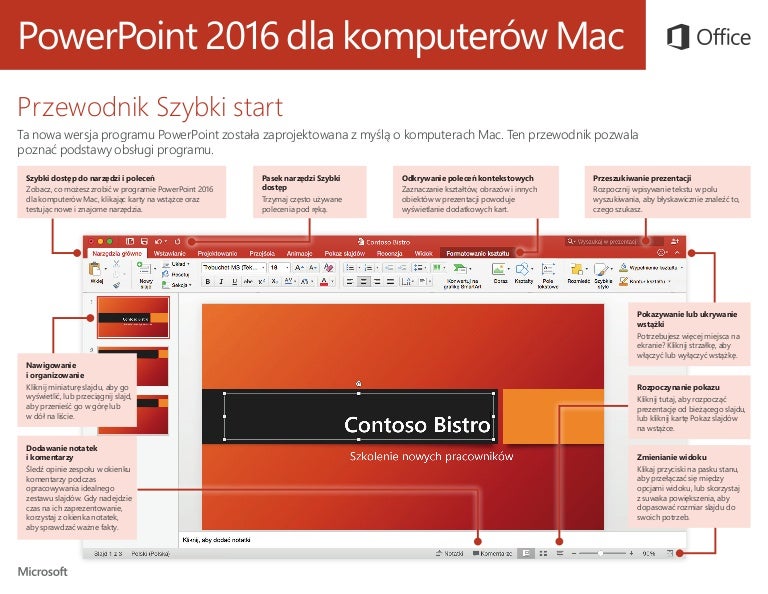

#MICROSOFT POWERPOINT 2016 MAC HELP FOR MAC#
Office 2016 for Mac doesn't support third-party COM add-ins. Support for COM add-ins that use custom ribbon controls For commands that are compatible with Office 2016 for Mac, see idMSOs compatible with Office 2016 for Mac. Most familiar Office Fluent Control Identifiers are compatible with Office for Mac. Ribbon customization featureĪbility to customize the ribbon using Ribbon XMLĪbility to invoke Macros using custom ribbon controlsĪbility to include and invoke Office Fluent Controls within a custom ribbon tab Note that there are some differences in ribbon support in Office 2016 for Mac and Office for Windows. Office 2016 for Mac supports ribbon customization using Ribbon XML. IFDEF between different Mac Office versions at compile time. Request a user's permission to access multiple files at once.Ĭall external AppleScript scripts from VB. The following VBA commands are new and unique to Office 2016 for Mac. Select and delete that folder using File/Move to Trash (Cmd+Delete). Find the Microsoft all Office apps' names folders if you are using Big Sur or later. Enter '/Library/Containers' and press Go (Return key). Creating an installer or putting user contentįor instructions on creating an installer for your add-in, please refer to the article here: Installing User Content in Office 2016 for Mac New VBA commands for Office 2016 for Mac From Finder Go/Go to Folder (Shift+Cmd+G). You can minimize the effects of sandboxing by using the new commands described in the following section. If youd like to check the details of your Microsoft Office version, please follow the instructions in this Microsoft Support article. This affects any add-ins or macros that involve file access or communication across processes. Sandboxing restricts the apps from accessing resources outside the app container. Unlike other versions of Office apps that support VBA, Office 2016 for Mac apps are sandboxed. See Customize the Ribbon and toolbars in Office for Mac.Outlook for Mac and OneNote for Mac don't support VBA. You can personalize the Ribbon and toolbars in Office just the way you like them, showing frequently used commands and hiding the ones you rarely use. These tabs disappear or change when you click something else in your presentation. Other such tabs include SmartArt Design, Chart Design, and Table Design. When you click a picture, the Picture Format tab appears. In the example above, the Shape Format tab appears when you click a shape or text box. When you click some parts of your slides, such as pictures, shapes, SmartArt, or text boxes, you might see a colorful new tab appear.

The View tab allows you to look at your presentation in different ways, depending on where you are in the creation or delivery process. The Review tab lets you add comments, run spell-check, review comments, and set permissions. On the Slide Show tab, set up the way that you want to show your presentation to others. You can see a variety of possible animations in the gallery, and you can see more of them by clicking the arrow below the gallery. Use the Animations tab to choreograph the movement of things on your slides. Find a gallery of the possible transitions in the Transition to This Slide group – click the arrow below the gallery to see all of them. Set up how your slides change from one to the next on the Transitions tab. On the Design tab, you can add a theme or color scheme, or format the slide size or background. This includes pictures, shapes, charts, links, text boxes, video, and more. InsertĬlick the Insert tab to add something to a slide. The Home tab holds the Cut and Paste features, Font and Paragraph options, and what you need to add and organize slides. Here’s a look at what you’ll find in each of the PowerPoint ribbon tabs. To animate things on your slides use the options on the Animations tab. For example, to give your slides a cohesive appearance, look for options on the Design tab. Tools and features are arranged on the ribbon tabs based on their purpose. When you see a feature with an arrow, you can click it to get more information or options. When you go to a tab, the ribbon for that tab opens and you can see the tools and functions available. When you open a PowerPoint document, the ribbon appears as a row of labels, or what we call tabs.
#MICROSOFT POWERPOINT 2016 MAC HELP SERIES#
PowerPoint 2016 for Mac commands and functions are organized on a ribbon, which is a series of menus or toolbars at the top of the program.


 0 kommentar(er)
0 kommentar(er)
